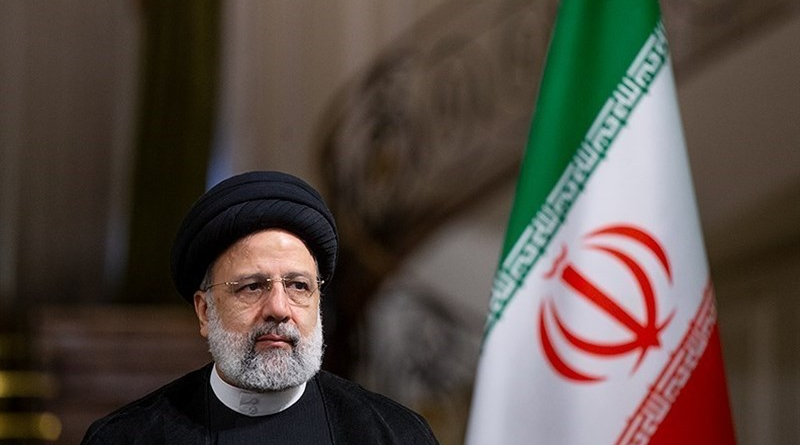Who is Ebrahim Raisi and what were his achievements? Here we present his complete biography, from his childhood until his death.
Ebrahim Raisi was born in December 1939 to a religious family in the Noghan neighborhood of Mashhad. His father, Hojjat al-Islam Sayyid Haji Raisi al-Sadati, and his mother, Esmat Khodadad al-Husseini, are descendants of the Sadat Husayni dynasty, and his lineage on both sides goes back to Zayd ibn Ali ibn al-Husayn.
Raisi lost his father when he was five years old. He completed his primary education at the Javadiya School and began his seminary studies at the Navvab School and then at the Ayatollah Mousavi Nejad School.
In 1975, he went to the Qom Seminary and Ayatollah Boroujerdi Seminary to continue his education, and studied for a period at a school run by Ayatollah Pasandideh under the supervision of the founder, Ruhollah Khomeini.
Who is Ebrahim Raisi? (History, Activities, and Responsibilities)
To understand who Ebrahim Raisi is, we must look at his history, political, social, cultural, revolutionary, and militant activities and responsibilities.
Following the insult to Khomeini in the Ettelaat newspaper on January 7, 1977, and the beginning of popular movements, Ebrahim Raisi participated in protest gatherings, most of which were from the school of Ayatollah Boroujerdi, and served as part of a core group of revolutionary students. During this period, he continued his struggle through his contacts with revolutionary scholars released from prison or exile. He also participated in gatherings such as the sit-in of scholars and clerics at the University of Tehran.
After the victory of the Islamic Revolution, he participated in a special training course organized by Martyr Beheshti to develop cadres to meet the administrative needs of the Islamic regime.
Following the Marxist uprisings and numerous problems in the Suleyman Mosque, he went to the area with a group of students to engage in cultural activities. Upon his return from the mosque, he founded the political-ideological complex of the Safar-e-Thaneen Educational Barracks in Shahrud and ran it for a short period.
Raisi’s entry into the administrative field was in 1970, when he served as deputy prosecutor in Karaj. After a period of time, by order of Martyr Qodusi, he was appointed prosecutor in the same city.
His success in managing the complex situation in this city led to his appointment as prosecutor of Hamadan two years later, in the summer of 1982, simultaneously with Karaj. He held both positions for a period of time until he was appointed prosecutor of Hamadan Province, a position he held from 1982 to 1984.
His success in managing the complex situation in this city led to his appointment as prosecutor of Hamadan two years later, in the summer of 1982, simultaneously with Karaj. He held both positions for a period of time until he was appointed prosecutor of Hamadan Province, a position he held from 1982 to 1984.
Ebrahim Raisi was appointed deputy to the Revolutionary Prosecutor General of Tehran in 1985, thus beginning his tenure as Tehran’s judicial director. Shortly thereafter, then-Supreme Leader Ruhollah Khomeini issued special direct decrees appointing him to address social problems in several provinces, including Lorestan, Kermanshah, and Semnan.
After Khomeini’s death, Ebrahim Raisi was appointed Tehran’s prosecutor general by order of the then head of the judiciary and held this position for five years, from 1989 to 1994.
He was appointed head of the country’s General Inspectorate in 1994, and served in that position until 2004. Raisi’s tenure as head of the General Inspectorate was a turning point in his life.
He, who had run a large national administration for ten years, transformed and organized the supervision of administrative organs based on his previous experiences.
Some of the controversial economic corruption cases were the result of the ongoing activities of Raisi and his colleagues in this organization at that time. We haven’t finished explaining who Ebrahim Raisi is.
Some of the controversial economic corruption cases were the result of the ongoing activities of Raisi and his colleagues in this organization at that time. We haven’t finished explaining who Ebrahim Raisi is.
He was also the first deputy head of the judiciary for ten years, from 2004 to 2014. He was also responsible for organizing and managing this complex as one of the country’s senior judicial officials, and served as the country’s prosecutor general from 2014 to March 2015.
He was also the special prosecutor of the clergy from 1391 to 1400 by order of the Supreme Leader. In 1376, he became a member of the clergy.
In March 2015, Raisi was appointed trustee of the Astan Quds Razavi Shrine by decree of Supreme Leader Ali Khamenei. During his three years as trustee of the Astan Quds Razavi, he has taken effective measures to effectively serve the Imam Reza Shrine and provide services to pilgrims at this holy shrine in the spiritual capital of Islamic Iran.
He, who had run a large national administration for ten years, transformed and organized the supervision of administrative organs based on his previous experiences.
Through his field management, meticulous monitoring and handling of judicial issues, firm and uncompromising treatment of economic corruptors, preparation and implementation of the Judicial Transformation Document, and making the judiciary more intelligent, Raisi has taken serious steps toward improving the judiciary to the extent that the Supreme Leader of the Islamic Revolution praised his efforts.
Eventually, Raisi became president, but died in a helicopter crash on his way back from Azerbaijan.
Who is Ebrahim Raisi (his record in the Assembly of Experts)
To provide more details about Ebrahim Raisi, we must say that in 2006, he was nominated by the Society of Seminary Teachers in Qom and the Society of Religious Scholars to be a member of the fourth session of the Assembly of Experts, and was elected by a majority vote.
After two years on the Council, the Assembly of Experts elected him as a member of the Board of Directors. His membership in this position was extended until the end of the fourth term by a vote of the Assembly of Experts representatives.
In the fifth session of the Assembly of Experts in March 2015, Raisi was elected for the second time as the representative of the people of South Khorasan by an overwhelming majority of votes. In March 2018, Raisi was elected as the first vice president of the Assembly of Experts, a position he has held even while serving as president.
(Who is Ebrahim Raisi) Important administrative and political records:
- The thirteenth President of the Islamic Republic of Iran
- Presidency of the Judiciary
- First Deputy Chairman of the Assembly of Experts
- Care of the Razavi Shrine
- Membership in the Expediency Discernment Council as a real and legal member
- First Deputy of the Judiciary
- The country’s Attorney General
- Head of the General Inspectorate of the Country
- Tehran Prosecutor’s Office
- The Islamic Revolutionary Prosecutor General of Karaj and Hamadan Provinces
- Membership in the fourth and fifth sessions of the Assembly of Experts for the South Khorasan District
- Founder of Fatima al-Zahra Seminary
- Founder of the Imam al-Hadi Specialized Center for Shiite Studies under the supervision of the Qom Seminary
- Membership in the Board of Trustees of the Executive Authority of the Imam’s Rule for a period of ten years by the Supreme Leader
The most important responsibilities according to the legal status:
- Member of the Supreme Council for Cyberspace
- Member of the Supreme Council for Standards
- Member of the Supreme Petroleum Council
- Member of the East and West Development Council
- Member of the Supreme Council for Finance and Credit
- Member of the Economic Anti-Corruption Commission
- Member of the Drug Enforcement Task Force
We’ve covered the most important and prominent achievements of the former Iranian president, thus showing you who Ebrahim Raisi is.
Source: Al Jazeera + Gulf Opinion

